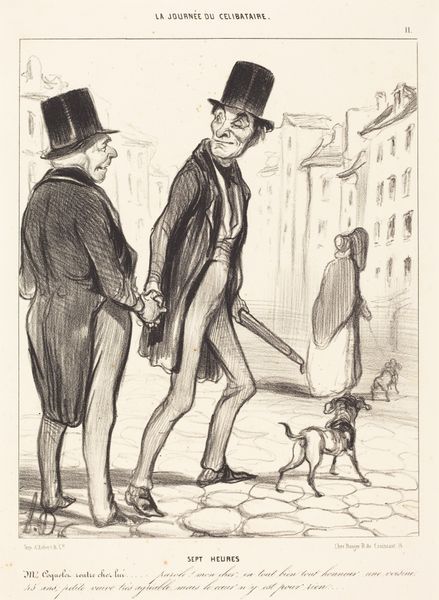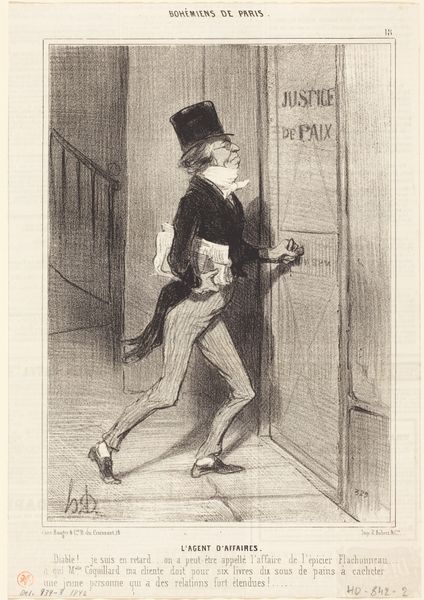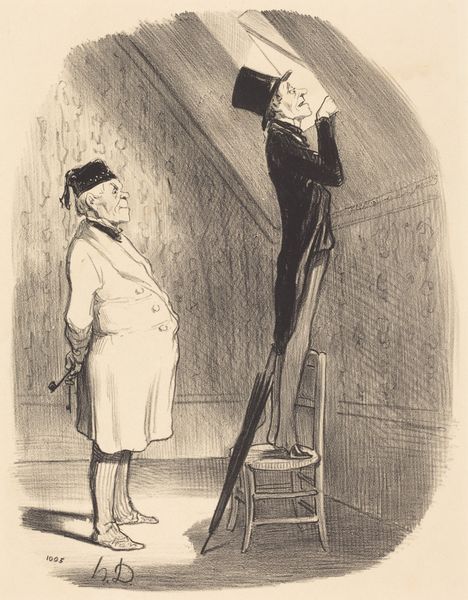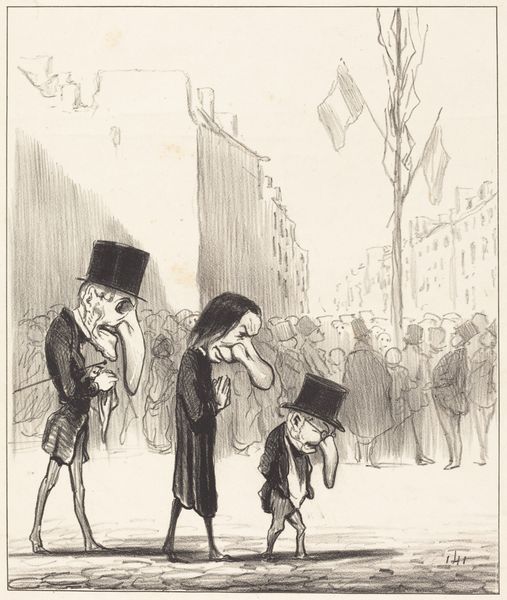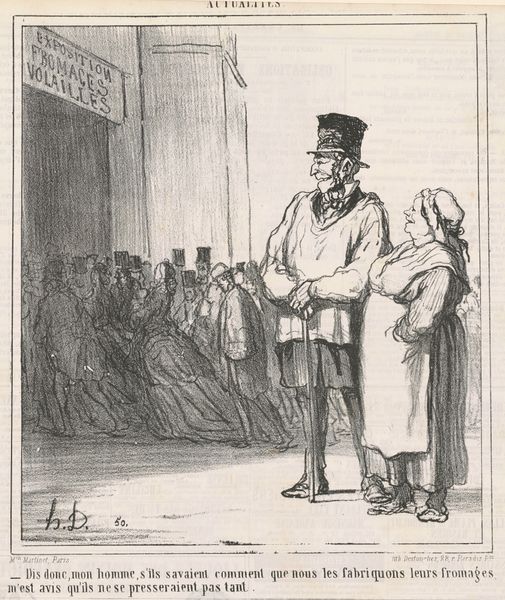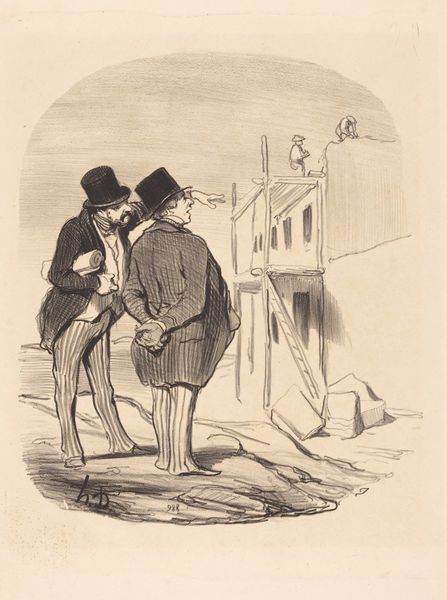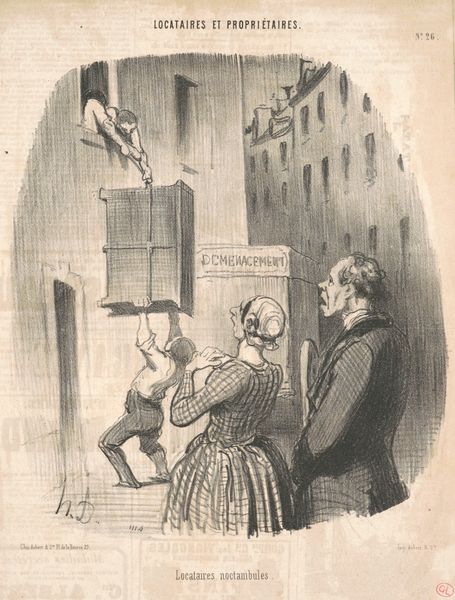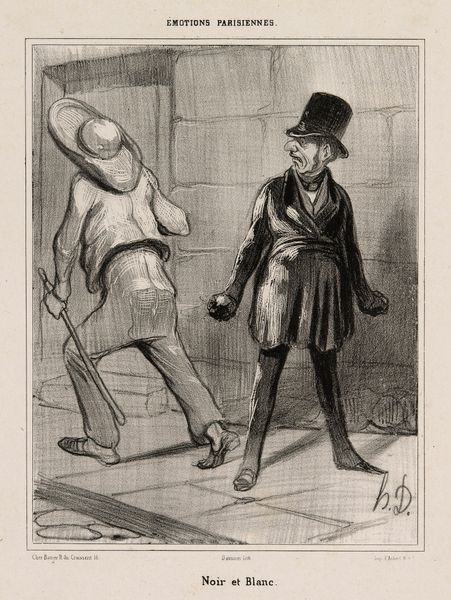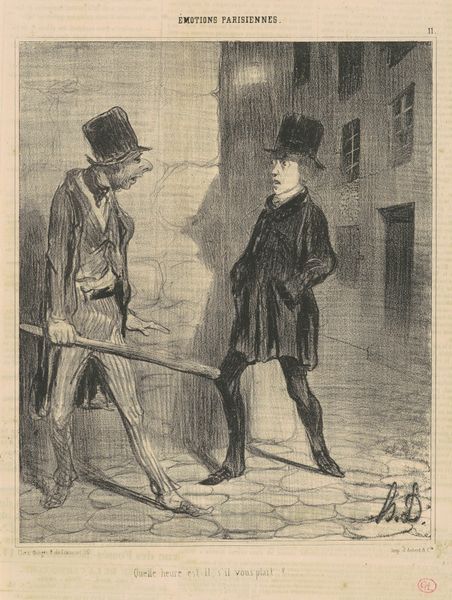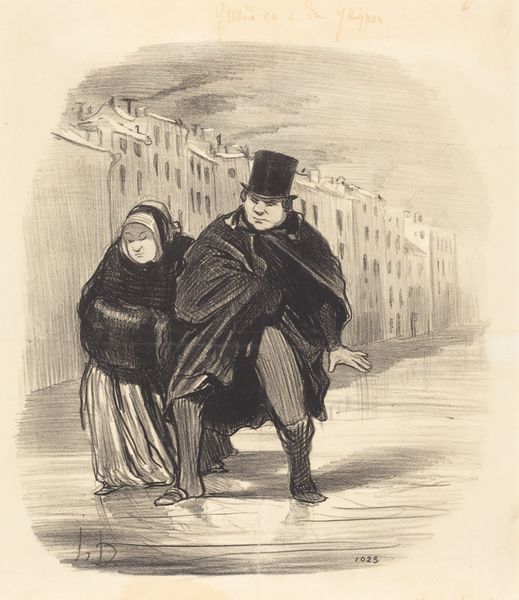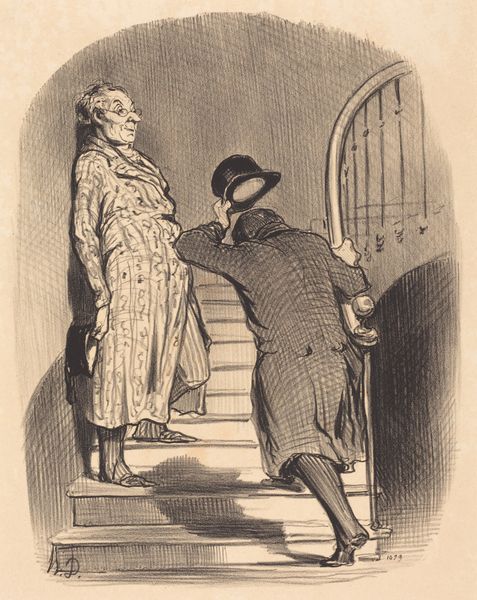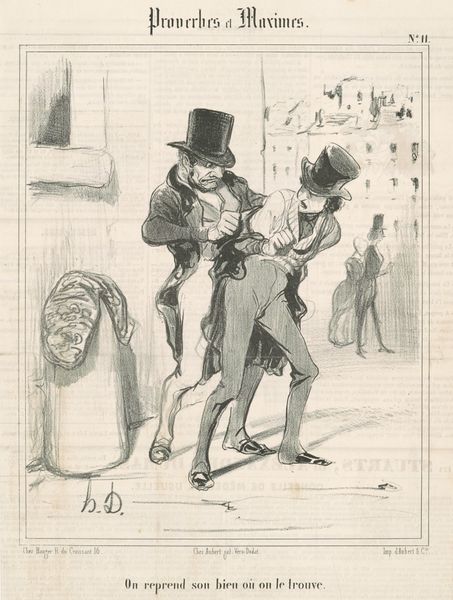
lithograph, print
#
portrait
#
16_19th-century
#
lithograph
# print
#
caricature
#
figuration
#
romanticism
#
line
#
cityscape
#
genre-painting
#
realism
Copyright: National Gallery of Art: CC0 1.0
Curator: Looking at this lithograph, titled "Tiens, voilà un écriteau que ma femme a passé..." created around 1848 by Honoré Daumier, my immediate reaction is to consider the narrative. It seems tinged with societal commentary, perhaps poking fun at domestic dynamics of the time. What do you think? Editor: Well, the most striking element to me is how stark and somewhat grim the lines are; there’s a harshness in the rendering of the figures and the urban environment, emphasizing the societal issues of that time. The title roughly translates to "Look, here's a sign my wife passed..." which feels charged with subtle gendered conflict right off the bat. Curator: That interplay, that marital dynamic, is key. I'm drawn to how Daumier uses visual cues—the husband’s posture, the wife slightly behind him, the stark announcement poster they’re observing. These aren't just characters; they're symbols of the relationship. Do you think it plays with ideas of patriarchy, with an underlying hint of rebellion? Editor: Absolutely. We're presented with these very specific roles that speak volumes. It is a time capsule of social hierarchies; we see an urban landscape deeply marked by gender inequality, and probably, if one examines Daumier's other work, class struggle too. Her action, the posted sign, feels quietly subversive, asserting some form of agency. Curator: It's fascinating how Daumier distills a whole power dynamic into a simple street scene. It seems to represent the invisible load many women carried and continue to carry. The heaviness and shadows within the line work seem to be reinforcing that load. Editor: Precisely, and beyond just the interpersonal dynamics, the artwork feels acutely relevant, reflecting persistent societal power dynamics. Even something as everyday as walking through the city, a married couple seeking an apartment, turns into an enactment of social issues. There is some universality here in that sense. Curator: Thinking of symbols, I feel the poster in the scene has the weight of a societal pronouncement or decree, with the figures arranged underneath, responding to its command. It really allows one to delve deep into questions of societal memory through the work. Editor: Yes, the city is a stage, and they're players caught in its narrative, each move laden with meaning. Curator: Ultimately, what stands out is Daumier's skill in using everyday observations to unveil so much beneath the surface. The subtle nuances he uses make you reflect about societal constructs of past and present. Editor: And it reminds us that even simple encounters can reveal deep-seated issues, and perhaps even spark social change. It is important to reflect on those themes.
Comments
No comments
Be the first to comment and join the conversation on the ultimate creative platform.
